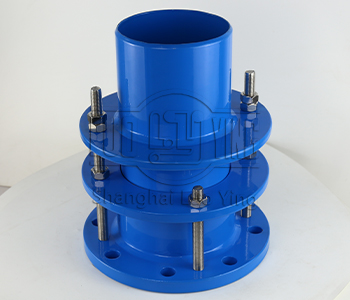How to select single flange limit expansion joint?
Jul-23-10
How to select single flange limit expansion joint?Selecting a single flange limit expansion joint involves considering several factors based on the specific requirements of the application. Here, I will outline a step-by-step process to assist you in selecting the appropriate single flange limit expansion joint.
Understand the Application: Begin by understanding the specific application requirements. Consider factors such as temperature, pressure, media, and the type of piping system involved. A single flange limit expansion joint is typically used for systems that require minimal movement and in applications with lower pressures and temperatures compared to other expansion joint types.
Identify Movement Capability: Determine the anticipated movement that the expansion joint will need to accommodate. This includes both axial (lengthwise) and lateral (sideways) movements. The expansion joint must have sufficient capability to handle the anticipated movement range within its operational limits.
Evaluate Design Standards: Understand the applicable design standards and guidelines for the expansion joint, such as those from organizations like the Expansion Joint Manufacturers Association (EJMA). These standards provide recommendations and design criteria for expansion joints, ensuring their safe and reliable operation.

Assess Material Compatibility: Examine the compatibility of the expansion joint materials with the media being transported. Different materials offer varying resistance to corrosion, chemicals, and other environmental factors. Ensure that the selected materials are compatible with the application to prevent degradation or failure over time.
Determine Flange Ratings: Check the required flange ratings for the expansion joint. Verify that the expansion joint flange rating meets or exceeds the system's pressure rating. It is crucial to match the flange rating of the expansion joint with that of the connected piping to ensure a proper and secure connection.
Verify Dimensions: Confirm that the expansion joint's dimensions, such as length and diameter, align with the system's requirements. Ensure that there is sufficient space available in the piping system to accommodate the expansion joint's movement without interference with adjacent components or structures.
Consider Special Requirements: Evaluate any additional requirements specific to the application, such as noise or vibration dampening, special fabrication or coating needs, or compliance with industry-specific regulations.
Consult with Experts: If needed, seek advice from experienced experts or expansion joint manufacturers. They can provide valuable insights, recommendations, and technical support based on the unique requirements of your application.
Review Maintenance and Service Life: Consider the maintenance requirements and expected service life of the expansion joint. Assess factors such as service intervals, inspection needs, and the availability of replacement parts for future maintenance or replacements.
Remember that the selection process may vary depending on the application, and it is essential to consult the manufacturer's technical documentation and recommendations. By following these steps and engaging in thorough research and analysis, you can choose the appropriate single flange limit expansion joint for your specific needs.

